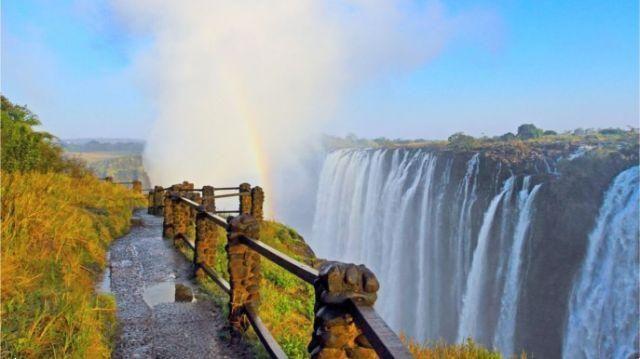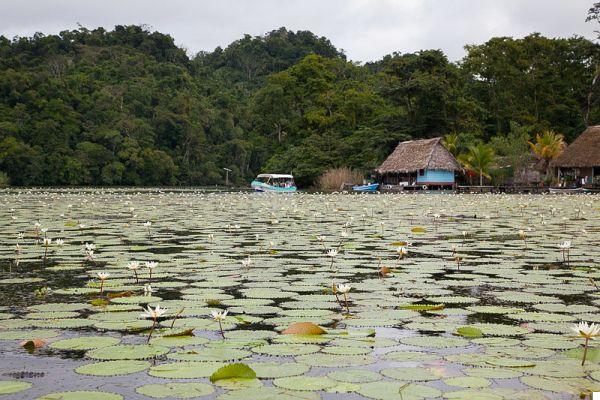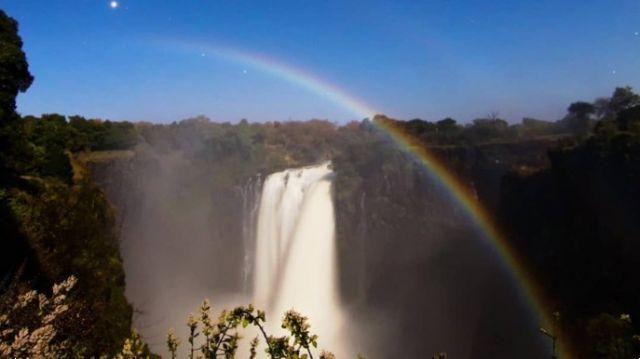
Source: Shutterstock
Zambia, one of African countries which still today still preserves its wild and uncontaminated territory intact, after having been a British colony - with the name of Northern Rhodesia – for almost a century, in 1964 it obtained independence and proclaimed itself a republic. For all travelers in the world, Zambia has an ancestral charm, the strength and explosive energy of nature, where it is possible to live an authentic adventure, a human experience that would be impossible to replicate elsewhere: living in close contact with the great Earth Africa and the wonderful creatures, and people, that inhabit it.
Advice and documents for a trip to Zambia
Un plane ticket to Zambia It's not cheap. Not even making use of its services and facilities, coming from abroad, is possible. But maybe it's almost a good thing. Above all for this reason, tourism today is still discreet in this country, almost selected, and certainly not why Zambia is not safe, on the contrary. Having the chance to go there is a human privilege, not an economic one. In these years of ecological awareness, the efforts to preserve intact a habitat of great value such as Zambia, and the whole of Africa, are never enough.
Therefore you need to have exactly this before setting off on a journey: awareness and... an irrepressible desire to live an authentic experience, vital and which will certainly change the perspective of all those who experience it. An adventure that is difficult to replicate anywhere else in the world, except in the much more extreme climatic conditions of Zambia, where the climate is tropical and the sun truly nourishes the earth and does not stun it.
Zambia: health documents and regulations
visit Zambia from Italy it is necessary to pay the entry visa (approximately $25), although advance booking in a hotel in some cases exempts travelers from paying the visa, while upon leaving the country the payment of the exit visa is mandatory ($20 approximately). Despite the fears of the collective imagination, no vaccination is mandatory, only antimalarial prophylaxis is recommended, and only in the case in which one transits or stops in South Africa, entering or leaving the country, does the yellow fever vaccine. However, it is advisable to obtain all the relevant information, perhaps from the local ASL, before departure.
When to leave for Zambia
Il best time to visit Zambia is the one coinciding with the dry season, from July to September, when the maximum temperatures never exceed 20-25° and the nights are cold. In spring, when nature is at its best, average temperatures are decidedly cooler, especially at night. In autumn and winter, during the rainy season, the heat increases and with it the humidity: it is the ideal period for lovers of birdwatching, but not all accommodation facilities are open.
Zambia: 19 natural parks and two major cities
The territory of Zambia is protected by well 19 natural parks, corresponding in surface area to a third of the country. Places of extraordinary beauty where it is possible to admire the splendid landscapes of the savannah, populated by hundreds of different animal species. The southern part of the town is the busiest, thanks to the presence of Lusaka, the capital, and the city of Livingstone, formerly called Maramba and gateway to Victoria Falls, which today bears the name of the English explorer who first explored the country in the second half of the nineteenth century. It is also found here Lake Kariba, created in 1959 to produce electricity and today a destination for lovers of boat excursions, and the small zoological park of Mosi-o-Tunya, where it is still possible to spot the white rhinoceros, which is unfortunately now in danger of extinction.
To the south east of the capital there is also the Lonchivar National Park, a natural paradise known above all for the presence of hundreds of specimens of splendid Kafue red antelopes, called lichwe. Southern Zambia also includes the immense Kafue National Park, while the border with Zimbabwe extends Lower Zambesi National Park. The northern part of the country still remains the least frequented and includes, in addition to lakes Bangweulu and Mweru, countless natural parks, among which the most important are the South and North Luangwa National Park, one of the largest African wildlife sanctuaries, and the Kasanka National Park, washed by well 8 lakes and crossed by 4 rivers. Finally, at the western end of Zambia, almost on the border with Angola, lies the Kiuwa Plain National Park.
Zambia: a safari for everyone
With so much wonderful nature available, Zambia it could only be the place where they were born walking safari, a unique experience to discover this extraordinary land, always accompanied by expert local guides. However, walking safari is not the only type of safari present in Zambia. Travelers will be able to choose between different types of experiences, come on walking safari to those on board jeeps (the classic safaris also called game drives) or boats, up to photographic ones, which combine the safari experience with the passion for the art of capturing reality with a camera. The excursions are always carried out within the parks and always led by expert staff, which will be able to give them all the information and security necessary to face, respect and admire the African wild nature. Once you have chosen your favorite type, all that remains is to decide which parks you decide to visit.
South Luangwa National Park: where the walking safari was born
South Luangwa is the most famous park in Zambia and covers over 9 thousand square kilometers of surface area, including the river from which it takes its name: the most intact river system in Africa. Its shores are populated by as many as 60 species of animals and over 400 types of birds. In addition to walking safaris, game drives and birdwatching excursions are also organized in this park.
Kafue National Park: the largest in Zambia
This is endless protected area, still poorly explored, with its over 22 thousand square kilometres, is just two hours' drive from Livingstone. Along the riverbed Kafue River, among rainforests, Miombo woods, swamps, mopane forests, rocky hills and endless expanses of savannah, such as the famous Busanga Swamp, the park is home to 55 species of mammals, including some examples of rare Sitatunga antelopes, red lechwes and many felines, such as lions and leopards. Elephants and buffaloes can also be spotted, especially in the dry season when the animals remain close to the marshy areas due to the heat, which is also an ideal habitat for birds of all types. Among the excursions to do here, even with children as long as they are safe, are absolutely not to be missed boat safari e i jeep safari at night.
Barefoot in the wilderness: the Lower Zambezi and the blue wildebeest in the Liuwa Plain
Il Lowe Zambesi National Park which includes within it the Zambezi river which brought the English explorer David Livingstone to Zambia, boasts the distinction of still being poorly organized and having maintained its wild beauty. Here the lodges, the typical accommodation facilities scattered within the parks, are very few and even today few operators organize safaris there. For this reason in the park there are many opportunities to spot and approach the animals, always with due precautions and always following the instructions of the guide who accompanies you. In its just over 4 thousand square kilometres, in the shade of gigantic baobabs and acacias, boat safaris, walking safaris, canoe trips and river rafting sessions are organised.
Located at the western end of Zambia, the small Liuwa Plain National Park (approximately 3600 kmXNUMX), which is also still little frequented by tourists, is characterized by endless savannahs where a large quantity of mammals runs free, including the extraordinary blue wildebeest, whose annual migration represents the second largest in all of Africa. They can be done inside the park suggestive game drives and photographic safaris.
Zambia: walking with lions near Victoria Falls
To close the review of Zambia's natural parks, it is necessary to highlight the small one Mukuni reserve, about 3 km from Victoria Falls, as only here is it possible to carry out some unique activities, such as walking with lions and cheetahs while the guides teach them how to hunt and travel short distances on elephant back. After having filled your eyes with all sorts of wild animals and impressive natural beauty, the experience of being in front of the majestic power of the Victoria Falls must certainly not be missed, dedicated by the English explorer David Livingstone to his queen in 1855 and always considered one of the seven wonders of the world.
The thundering noise of its waters, especially between November and April during the rainy season, cancels out any other sound. The waterfalls can be admired in all their beauty via a panoramic trail accessible on foot or, from above, with a suggestive helicopter tour. The Devil’s Punch Bowl above the waterfalls, in certain seasons it transforms into a wonderful natural swimming pool, where it is even possible to go for a swim before returning, unfortunately this time too, home.






